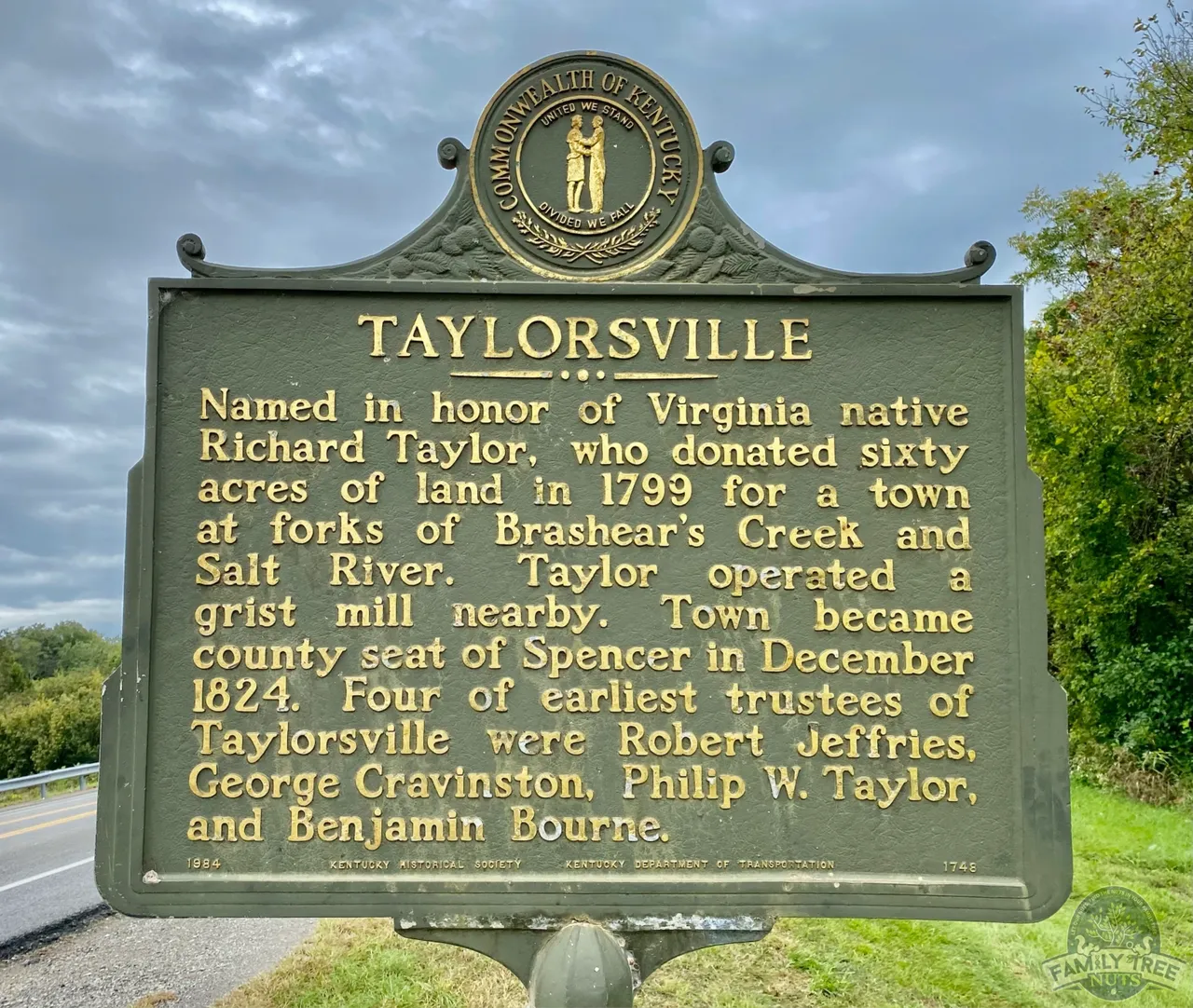
TAYLORSVILLE, KY – A BRIEF HISTORY

Taylorsville, Kentucky, is named for a man that came to Kentucky, long before settlement, a Revolutionary War veteran, and a father of a president. It’s the home of a Civil War spy, that may have saved the Union. They captured the commander of Quantrill’s Raiders here, and it’s also the home of a revolutionary inventor of products for the blind, and so much more. The town was laid out, in 1799, in what was then Shelby County, and it was named for Virginia native, Richard Taylor. Richard donated 60 acres for a town at the confluence of Brashears Creek, and Salt River, where he operated a grist mill.
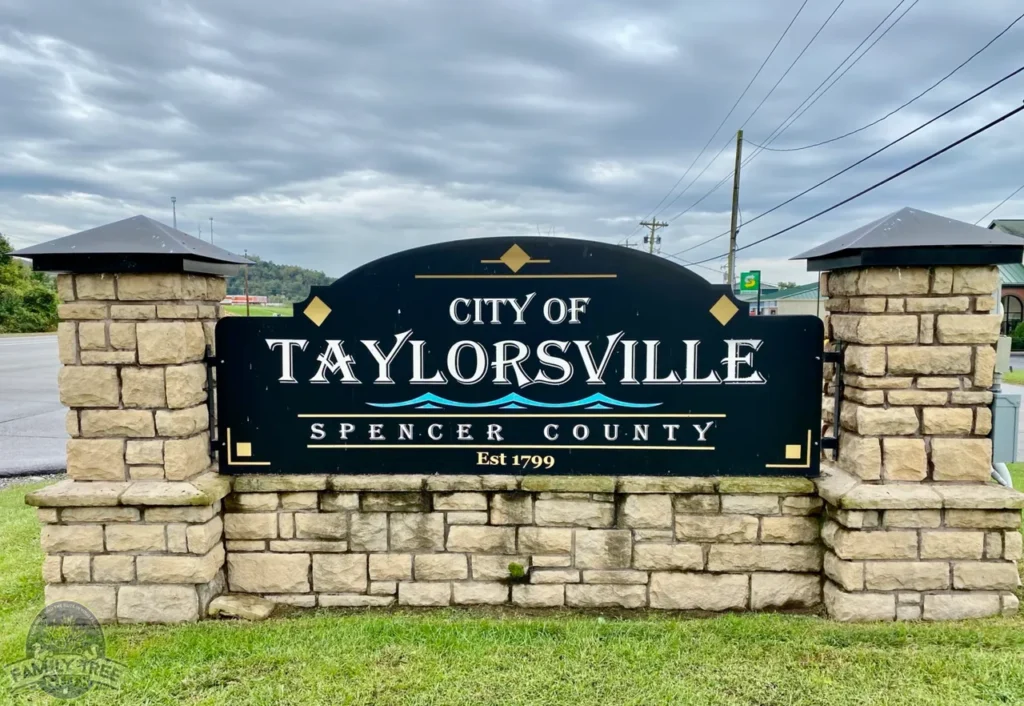
Richard Taylor is famous for many other things as well. He was a graduate of the College of William and Mary. In 1769, he took a trip with his brother Hancock, from Pittsburgh, all the way down the Ohio River, to the Mississippi River, and all the way to New Orleans. Their group was said to be the first white men to do so. His brother Hancock spent the next few years exploring, and surveying Kentucky, and he did this, before the first settlements of Fort Harrod, and Fort Boonesborough. In 1774, Hancock was shot by Native Americans near modern day Carrollton, Kentucky, and while he was recovering, Daniel Boone arrived on his mission to tell the surveyors to get out of Kentucky, because the Native Americans were on the warpath. On their way back to Virginia, Hancock died of his wounds, in modern day Madison County, Kentucky.
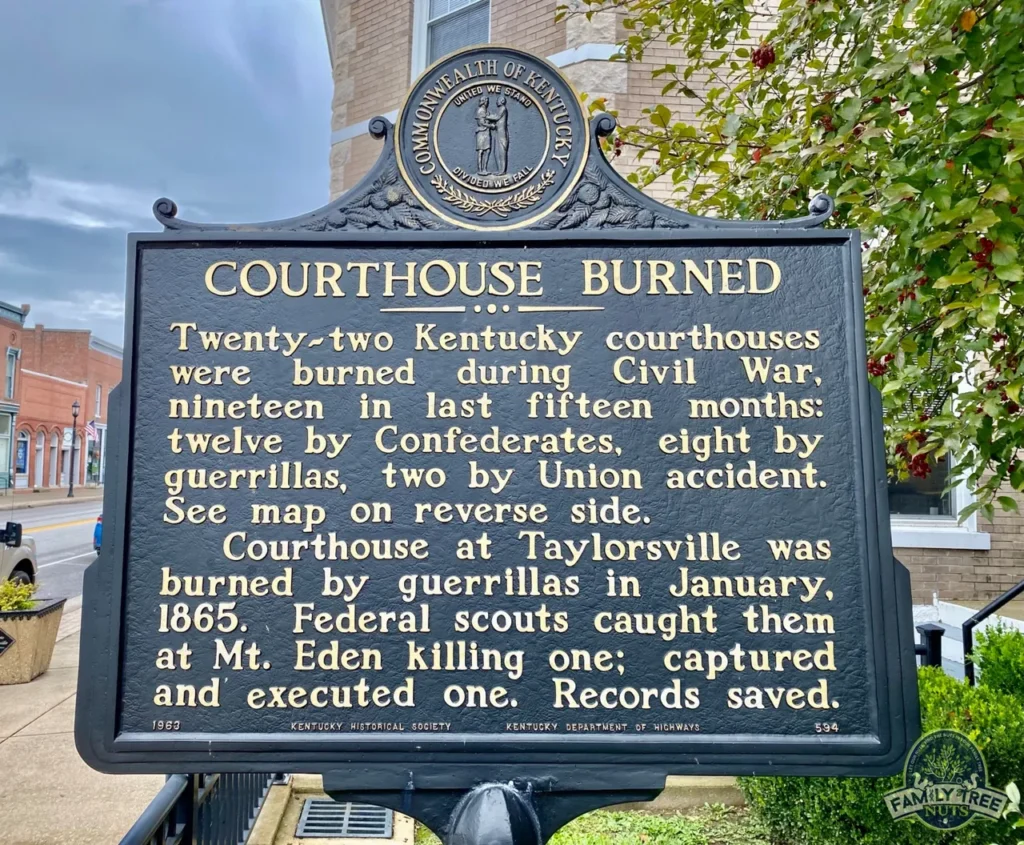
When the Revolutionary War broke out, Richard began his service as a Second Lieutenant, but before his service was over, he had been promoted to Lieutenant Colonel. He served in the battles of White Plains, Trenton, Brandywine, and Monmouth. He was also involved in the Valley Forge Campaign by commandeering supplies for General Washington’s Army. Richard was given, and acquired 8,000 acres in Kentucky, and he moved his family there, in 1785. In 1792, he built his first brick home on land that he bought from Kentucky’s first governor, Isaac Shelby, and in that same year, he served with the Kentucky Militia in a campaign against the Shawnee, under Major John Adair. He was wounded in battle near Fort St. Clair in Ohio.
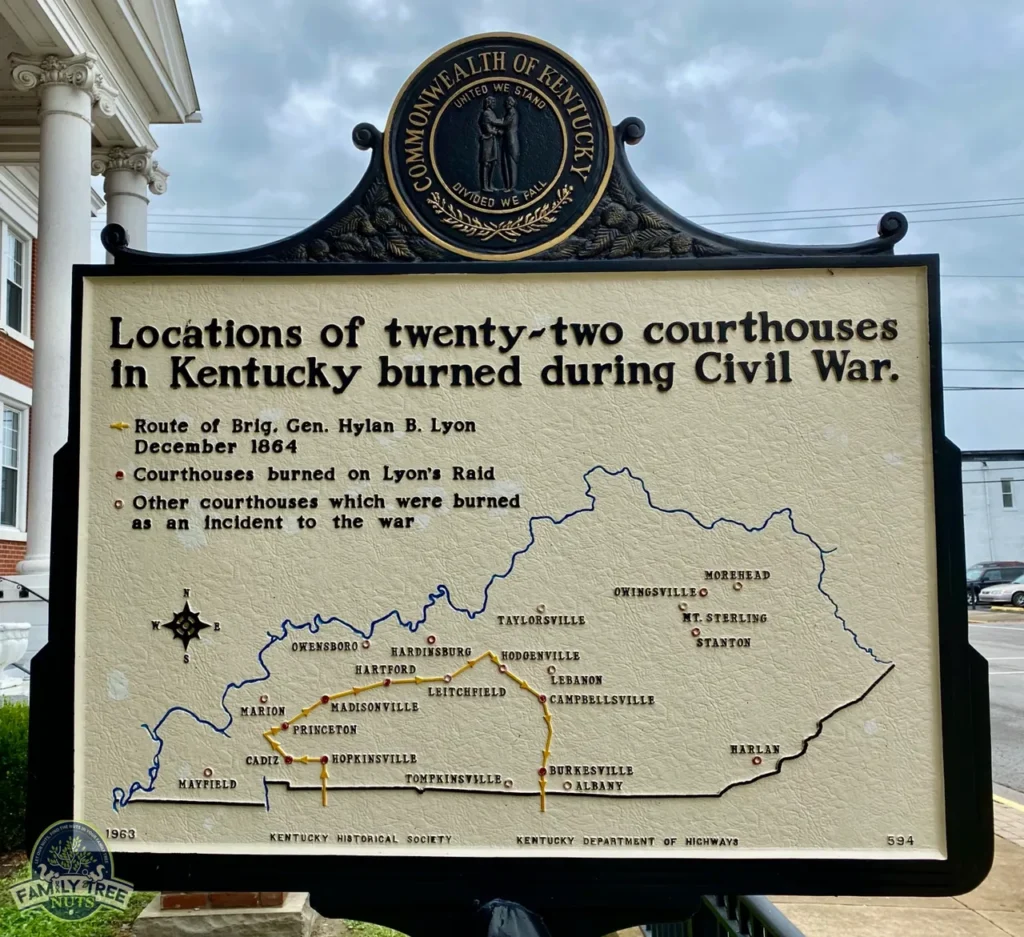
In the late 1790s, Richard built his home called Springfield, which is in the eastern end of the modern Louisville Metro area. This is about the time that he donated land to build the town that bears his name, Taylorsville. Richard died in 1829, and he’s buried in the family cemetery that became, the Zachary Taylor National Cemetery. That cemetery was named after his son, President and Major General Zachary Taylor, “The Hero of the Mexican War”, “Old Rough and Ready”.
Another interesting fact about Taylorsville, is that in, January 1865, the courthouse was burned by Confederate guerrillas led by Captain’s Henry McGruder, Billy Marion, and Jim Davis. The guerrillas interrupted services at the Presbyterian Church, to tell the county clerk that if he wanted to get anything out of the courthouse, he had better get it now, because they intended to burn it down. The clerk was able to rescue his Masonic regalia, and the County Court books, but the courthouse was completely burned to a total loss. A new courthouse was built, from 1868-1869, but that courthouse was also destroyed by fire, in the fire that burned the town in 1930. After that fire, the next courthouse was built in its present location.
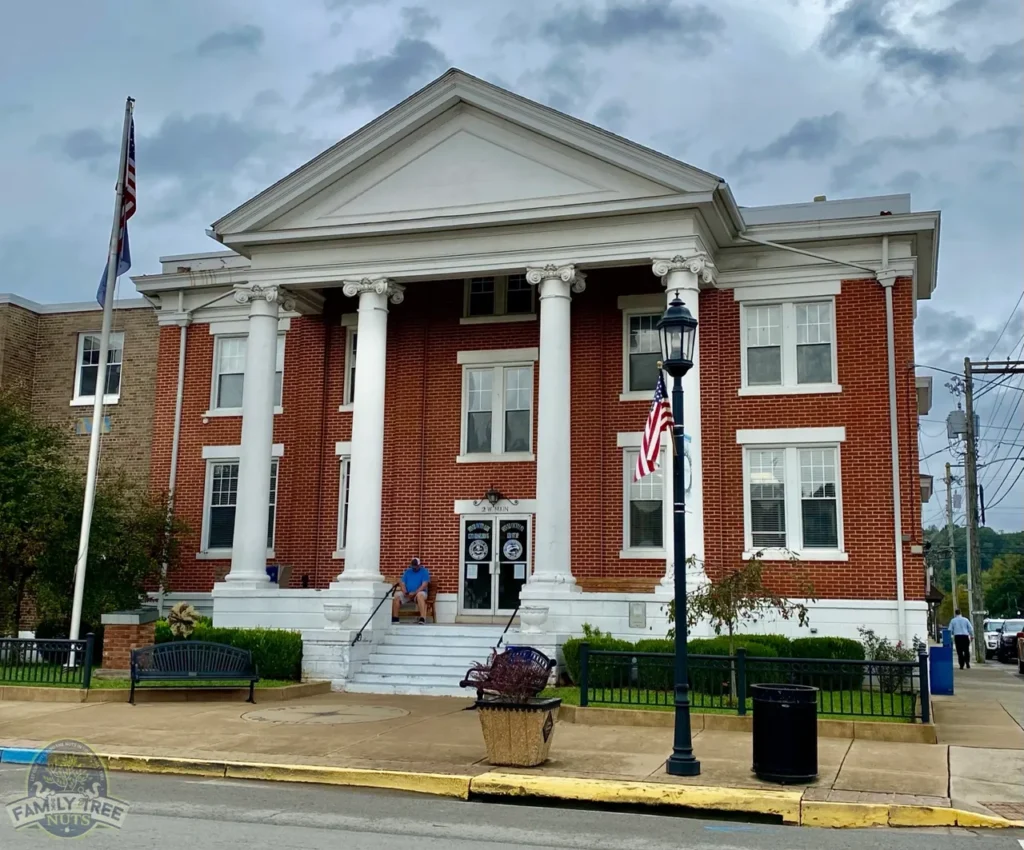
The town is also home to the Spencer House, which was a famous hotel and a tavern, built in 1838. It has been used as a funeral home for almost 100 years now. Taylorsville is the home of Felix Grundy Stidger, “The Spy That Saved the Union”. Stidger infiltrated the Knights of the Golden Circle and became one of their most trusted men. His information led to the destruction of Confederate plans that may have turned the tide of the Civil War for the Confederacy. Also, a bit south of the town, the infamous Captain William Quantrill, leader of Quantrill’s Raiders was mortally wounded, and captured. He died a few weeks later in the Louisville prison hospital.
Another person of note from Taylorsville, is James Morrison Heady. Although Heady suffered from blindness, and deafness, he became an author, a poet, and made many inventions for the blind. The area is the site of the beautiful, and historic home Vaucluse, which is also known as, the Jacob Yoder House. Yoder originally named the house “Beechland”, and it was built, in 1804. Yoder is known as the man that invented the flat boat, and in 1782, he became the first man to take a flat boat from Pittsburgh, down the Ohio River, then down the Mississippi River, to New Orleans and sell goods for a profit.
This article just scratches the surface of the history of this wonderful small town. To learn more, make sure to to reach out to the town’s historical society, and chamber of commerce. Also, be sure to see the video at the link below, to see the sites mentioned above.
– Col. Russ Carson, Jr., Founder, Family Tree Nuts
